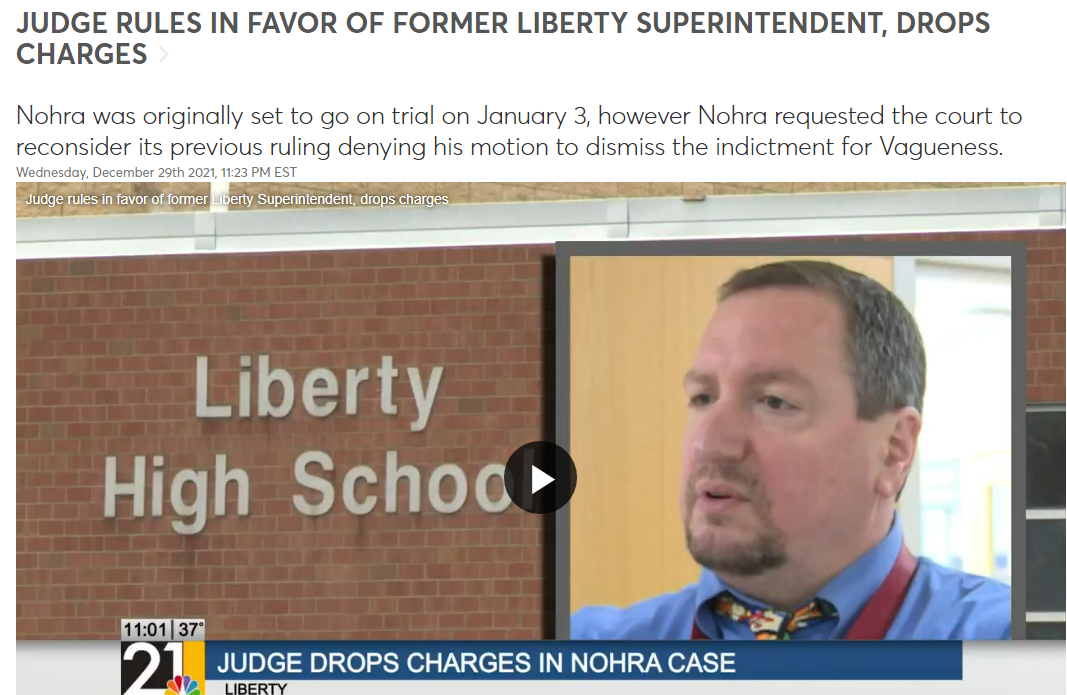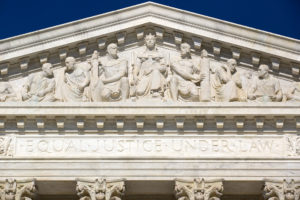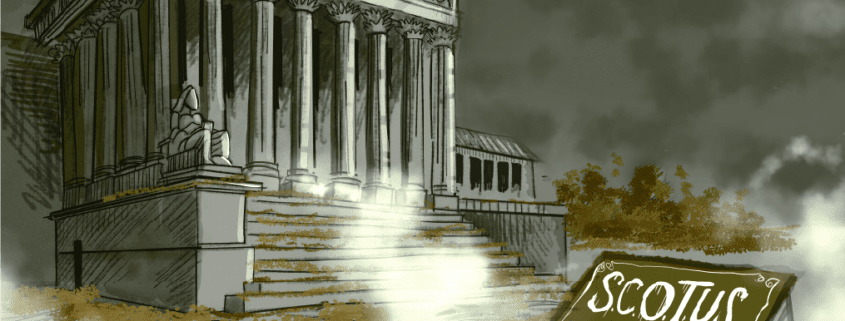Time for a Supreme Court retrospective; ‘goodbye and good riddance’
Three days after assuming the presidency in 2009, Barrack Obama looked House and Senate Republican leaders in the eye and uttered the phrase, “Elections have consequences.” The just-concluded term of the U.S. Supreme Court proves the former president was exactly right — most likely much to his chagrin. I know I have written about the court often over the past few months. Thankfully, this will be the last time I address the topic for a while because the justices are headed off to do whatever they do when they remove their robes and go on vacation. Here is a retrospective on the 2021-2022 term, which, by any measure, was one of the most consequential in history.
I will begin with the biggie: Dobbs v. Jackson Women’s Health Organization, the 6-3 decision that overturned Roe v. Wade and tossed nearly a half-century of legal precedent on the trash heap of history. With hours of the decision, Ohio AG David Yost successfully petitioned a federal court to lift a stay on the state’s “heartbeat bill,” which bans abortions after six weeks and does not include an exception for rape or incest. A few days later a 10-year-old girl who was six weeks and three days pregnant as result of a sexual assault was forced to travel to Indiana to receive the medical care she needed.
The 6-3 ruling in New York State Rifle & Pistol Assoc. v. Bruen eviscerated a New York state law that required residents to obtain a permit to carry a weapon and will make it extremely difficult for other states to strengthen their gun safety regulations. Keep in mind, this is the same year in which there were mass shootings in Buffalo, New York; Uvalde, Texas; and the July 4th massacre in Highland Park, Ilinois, where seven people died including the parents of a 2-year-old toddler who was left to wander down the street as her mother and father laid dead.
A number of decisions eroded the constitutional wall the Founding Fathers erected between church and state. Most notable were Carson v. Makin, which will make it easier for state governments to divert tax dollars from public education to religious schools, and Kennedy v. Bremerton School District, which cleared the way for prayer at public school football games and other events.
The conservative 6-3 majority struck a blow in West Virginia v. Environmental Protection Agency by curtailing the EPA’s ability to order existing power plants to reduce their carbon emissions. Ironically, this means that if more kids are born as a result of Dobbs it will be more difficult for them to breathe. Just saying.
Because the federal government has not broken enough promises to or heaped enough indignity upon Native Americans, the Court ruled against the Cherokee Nation in Oklahoma v. Castro-Huerta. Conservative Neil Gorsuch joined the court’s three liberals in dissent arguing that the decision reneges on the federal government’s centuries-old promise that tribes would remain forever free from interference by state authorities.
Because even a stopped clock is right twice a day, I will acknowledge that the justices ruled correctly in a few cases, including Biden v. Texas, a 5-4 ruling that permitted the current administration to reverse a Trump-era policy that requires asylum seekers to remain in Mexico while their cases are reviewed in U.S. courts. And Biden v. Missouri approved a federal vaccine mandate for health care workers employed at facilities that receive Medicare and Medicaid funding.
So, with that, I will say goodbye and good riddance to SCOTUS’s 2021-2022 term and take a three-month break from writing about the Supreme Court.

 Abortion rights supporters and anti-abortion demonstrators rally outside the U.S. Supreme Court on Nov. 1, 2021. | Drew Angerer/Getty Images
Abortion rights supporters and anti-abortion demonstrators rally outside the U.S. Supreme Court on Nov. 1, 2021. | Drew Angerer/Getty Images
 In a ruling handed down on Wednesday, December 30, 2021, Trumbull County Common Pleas Court Judge Ronald Rice dismissed six felony counts that had been lodged against former Liberty Local Schools Superintendent Joe Nohra earlier this year. The ruling came in response to a motion filed by Atty. David Betras arguing that the statutes under which Mr. Nohra had been indicted were unconstitutionally vague. In a well reasoned six-page decision Judge Rice agreed:
In a ruling handed down on Wednesday, December 30, 2021, Trumbull County Common Pleas Court Judge Ronald Rice dismissed six felony counts that had been lodged against former Liberty Local Schools Superintendent Joe Nohra earlier this year. The ruling came in response to a motion filed by Atty. David Betras arguing that the statutes under which Mr. Nohra had been indicted were unconstitutionally vague. In a well reasoned six-page decision Judge Rice agreed:
 Like kids counting the days until Christmas, attorneys, legal scholars, and jurisprudence junkies, including me, eagerly anticipate the first Monday in October, the day the Supreme Court of the United States (SCOTUS) begins its new term each year. We can barely control ourselves as we wait for the justices to decide which of the 7,000 cases submitted to them annually become one of the 150 or so they hear.
Like kids counting the days until Christmas, attorneys, legal scholars, and jurisprudence junkies, including me, eagerly anticipate the first Monday in October, the day the Supreme Court of the United States (SCOTUS) begins its new term each year. We can barely control ourselves as we wait for the justices to decide which of the 7,000 cases submitted to them annually become one of the 150 or so they hear. Chief among the potential blockbusters is
Chief among the potential blockbusters is 
 For starters, according to the Supreme Court’s 1966 ruling in Miranda v. Arizona, law enforcement officers do not have to issue a Miranda warning unless they are conducting a custodial interrogation. In plain English, that means suspects do not have to be advised of their right to keep their yap shut unless and until they have been deprived of their freedom of action in a significant way.
For starters, according to the Supreme Court’s 1966 ruling in Miranda v. Arizona, law enforcement officers do not have to issue a Miranda warning unless they are conducting a custodial interrogation. In plain English, that means suspects do not have to be advised of their right to keep their yap shut unless and until they have been deprived of their freedom of action in a significant way. Frivolous, adjective: not having any serious purpose or value.
Frivolous, adjective: not having any serious purpose or value.